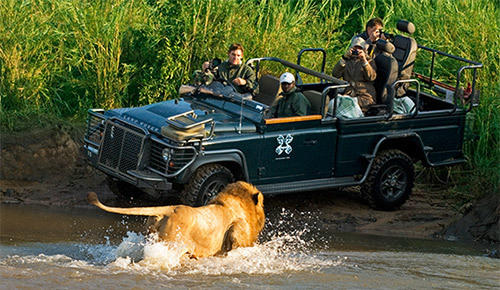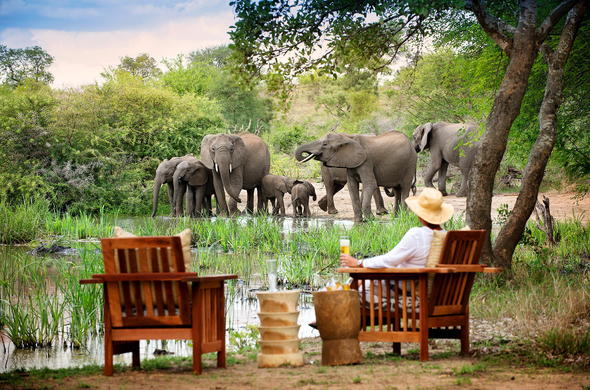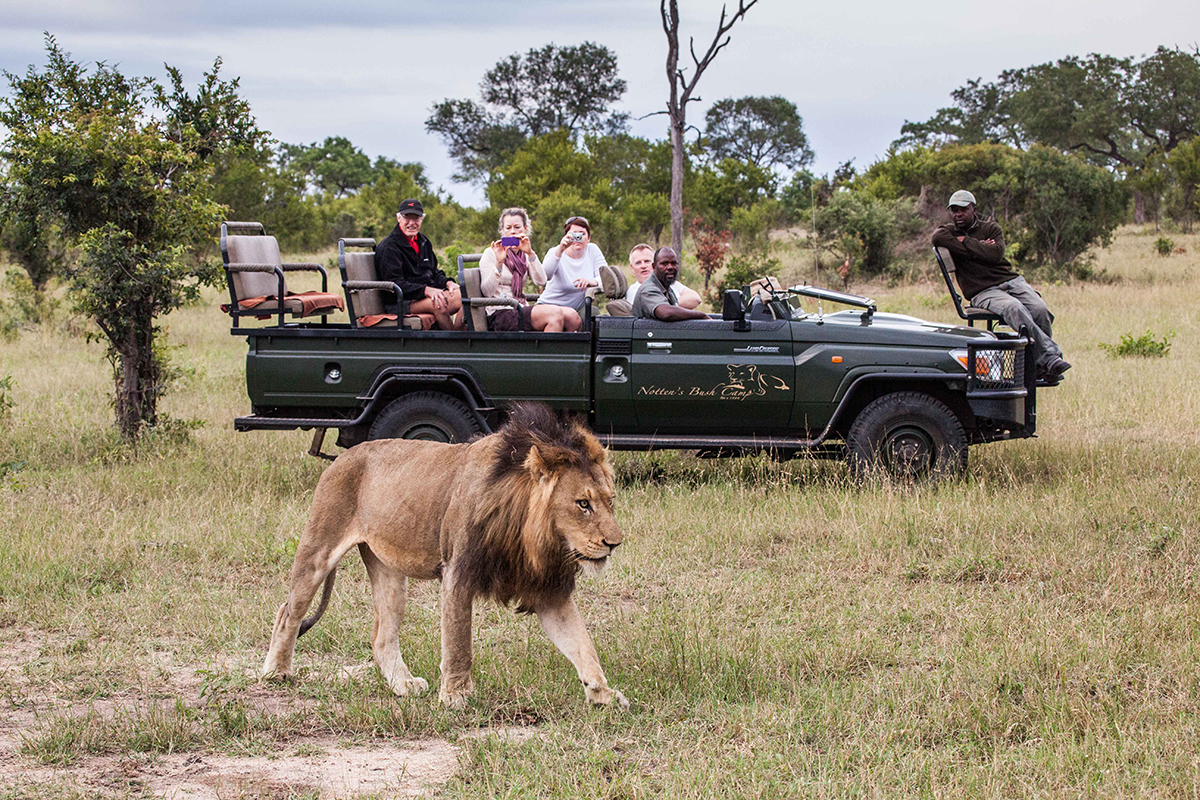Exploring the Majestic Wildlife and Scenic Landscapes of Kruger Park Safaris: A Memorable Adventure Waits For
Kruger Park, a foundation of South Africa's natural heritage, provides an elaborate tapestry of wildlife and breathtaking landscapes, welcoming exploration and interaction with its diverse ecosystems. As site visitors endeavor into this expansive sanctuary, they encounter not just the famous Huge Five yet likewise a riches of other varieties that enhance the park's biodiversity. The juxtaposition of substantial savannas and rich timberlands develops a vibrant background for the safari experience. Nevertheless, recognizing the optimum time to check out and the subtleties of safari decorum can considerably enhance one's trip. What insights wait for those that seek to browse this stunning wilderness?
Review of Kruger Park
Among South Africa's largest and most prominent video game books, Kruger National Park extends around 19,485 square kilometers in the northeastern region of the nation. Established in 1898, it is a foundation of preservation efforts, showcasing varied communities that include savannas, timberlands, and riverine forests. The park is home to a remarkable array of wild animals, with over 500 bird types and various creatures, reptiles, and plants, making it a biodiversity hotspot.
Kruger National forest is divided into different regions, each offering one-of-a-kind landscapes and habitats, thus enhancing wildlife seeing chances. Site visitors can discover the park through self-drive routes or directed safaris, enabling for an immersive experience in nature. The park's facilities consists of properly maintained roadways, remainder camps, and barbecue locations, making certain accessibility for all sorts of travelers.
In Addition, Kruger National Park plays a pivotal role in education and learning and study, adding to international preservation efforts. The park's dedication to sustainable tourist promotes responsible wildlife watching, cultivating a much deeper recognition for South Africa's natural heritage. With its spectacular landscapes and abundant biodiversity, Kruger National Park remains a top location for experience hunters and nature lovers alike.
The Huge Five Experience
Kruger National forest is renowned for using visitors the chance to encounter the renowned Big 5, that includes the lion, leopard, elephant, buffalo, and rhinoceros. This distinct opportunity to observe these magnificent pets in their all-natural habitat draws wild animals lovers and adventure candidates from around the globe.
The excitement of finding the Big 5 is not simply concerning the pets themselves however additionally the context of their setting. Each safari offers a new adventure, as overviews share understandings into the behaviors, environments, and conservation efforts surrounding these species. The evasive leopard, commonly seen resting in the trees, showcases the elegance of dexterity and stealth, while the imposing elephant herd highlights the value of social structures within wild animals communities.

The Cape buffalo, understood for their unpredictable nature, adds an element of excitement to any kind of safari. This immersive experience cultivates a deeper appreciation for wild animals and emphasizes the value of protecting these amazing creatures for future generations.
Picturesque Landscapes and Ecosystems
Often celebrated for its impressive elegance, the landscapes of Kruger National forest use a diverse tapestry of ecosystems that boost the safari experience. Covering nearly 2 million hectares, the park is home to a plethora of habitats, consisting of savannahs, wetlands, rivers, and forests. Each environment is uniquely intertwined, producing a vibrant atmosphere that supports a variety of flora and fauna.
The savannahs, identified by large meadows dotted with acacia and baobab trees, give optimal grazing premises for herbivores like wildebeests and zebras. In comparison, the thick timberlands and thickets supply haven for predators and smaller types, fostering an abundant biodiversity. The park's waterholes and rivers are lifelines for wildlife, bring in a huge selection of pets, specifically during the completely dry period.
This detailed interplay of ecological communities not only supports the park's legendary wildlife but additionally offers visitors with sensational panoramas, from rolling plains to dramatic rough outcrops. Whether going across open savannahs or checking out thick bushveld, the breathtaking landscapes of Kruger National Park guarantee to leave an enduring mark on every safari enthusiast's heart.
Best Times to See
Recognizing the very best times to see Kruger National Park can considerably boost the safari experience. Kruger park safaris. The park experiences 2 key periods: the dry winter season months from May to September and the wet summertime from October to April. Each period uses one-of-a-kind benefits for wildlife viewing and landscape recognition
Throughout the completely dry period, animals gather around water resources, making wild animals detecting extra foreseeable. The plant life weakens, giving clearer visibility for sightings of the Big 5 and various other types. This duration is especially prominent amongst vacationers because of the beneficial problems for game drives and directed walks.
On the other hand, the damp season, characterized by lush landscapes and vibrant flora, is optimal for birdwatching lovers. Kruger park safaris. Migratory birds are abundant, and the park becomes a place for various avian varieties. Furthermore, this season notes the birth of several young animals, providing a possibility to witness the fascinating characteristics of wild animals interactions
Inevitably, the most effective time to see depends on individual choices, whether one looks for the convenience of wild animals discoveries or the charm of a growing environment. Despite the read the full info here season, Kruger National Park promises an unforgettable experience for all who venture right into its wild embrace.
Safari Tips and Standards

Think about the time of year when planning your safari. The completely dry season, from May to September, usually uses much better wildlife viewing possibilities. Wear neutral colors to mix right into the setting, and prevent bright or showy attire that might alarm animals.
Pack fundamentals such as binoculars, a camera, sun block, and insect repellent. Remaining hydrated is important-- carry enough water for your group. In addition, bear in mind the park's wild animals; their website observe from a range and never effort to feed or provoke pets, as this can change their all-natural actions.
Involve with skilled overviews, who provide invaluable understandings and enhance your understanding of the ecological community. Technique your safari with patience and an open heart, enabling for spontaneous minutes that will produce unforgettable memories in this magnificent landscape.
Verdict
Finally, Kruger Park supplies an exceptional chance to engage with varied wild animals and spectacular landscapes. The park's commitment to preservation and education and learning boosts the safari experience, enabling site visitors to appreciate the complex balance of environments. Witnessing the Big 5 and exploring numerous terrains cultivates a much deeper understanding of South Africa's all-natural heritage. With cautious planning and adherence to guidelines, an experience in Kruger Park assures to be both enriching and memorable for all that embark on this trip.
Kruger Park, a keystone of South Africa's all-natural heritage, uses an intricate tapestry of wildlife and awesome landscapes, welcoming expedition and engagement with its diverse click this environments.Kruger National Park is separated right into different areas, each offering unique landscapes and environments, thus boosting wildlife watching chances. The park's waterholes and rivers are lifelines for wild animals, drawing in a wide variety of pets, especially during the completely dry season.
Additionally, be mindful of the park's wildlife; observe from a range and never ever effort to feed or prompt animals, as this can modify their natural habits.
